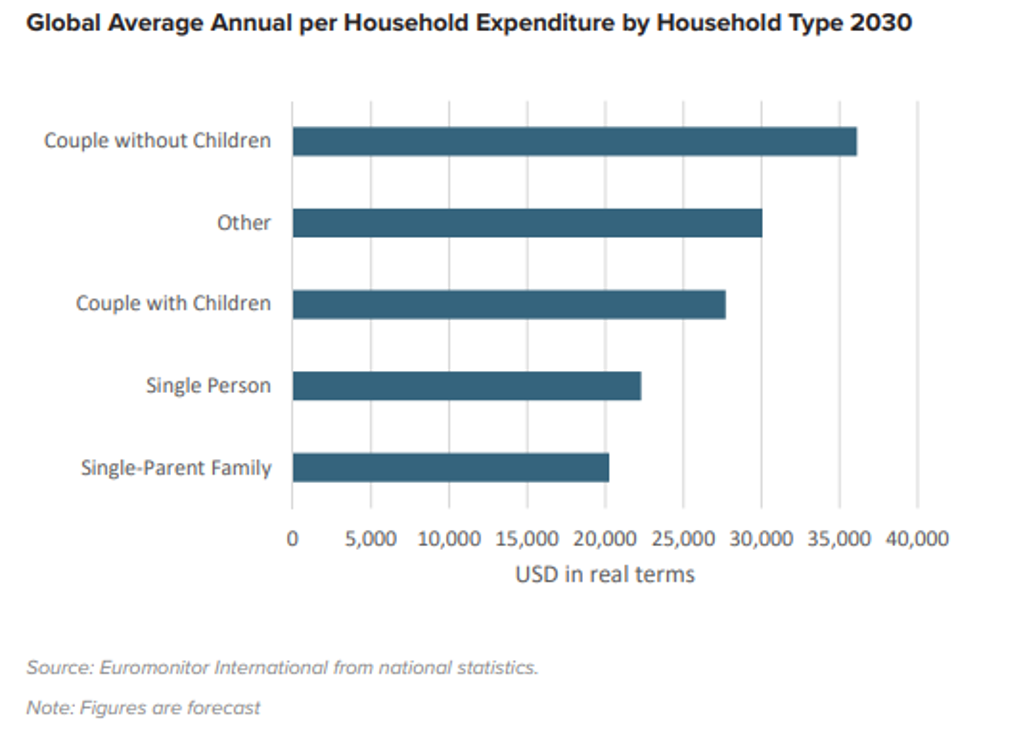The reshaping of the future family is having diverse effects on how and what households buy. Households made up of couples without children will on average have the highest annual per household spend globally through to 2030. Without children and with dual-income potential, this household type can afford to spend more.
Couple-without-children households have more disposable income
Whether by choice or circumstance, the lack of dependents in the household can allow for more income to be put toward savings or to be spent on other interests. Costs for food, clothing and long-term education associated with raising one or more children are eliminated from the home.
The couple also does not require as much living space to accommodate themselves and their needs. That could allow them to rent or purchase dwellings with smaller spaces at lower costs, or they could, conversely, use the additional bedrooms for other purposes, such as a guestroom, a home office or a personal recreation space.
This greater income potential could allow the couple to make more purchases for personal satisfaction that might otherwise be deemed too expensive.
The availability of more disposable cash also creates the possibility for further exploration of investment opportunities. The money that might have been spent on children could be put into stocks, bonds or other investment vehicles
Opportunities: Big spenders
More income, more spend: Since couple-without-children households are far more likely to be in a situation with a dual-income compared to other household types — or even if there is only one income there is no added financial responsibility of children — they can spend more. This is a vital point that brands must understand and do more to target niche products at this demographic.
Design appeals: While households with children are more likely to be concerned by practicality and value, childless couples can typically focus more on design and aesthetics when it comes to products, particularly home furnishings and furniture, craft goods and various home design features.
Likewise, childless couples are more likely to live in an urban high-rise apartment complex with all the available amenities onsite.
Pre-children, post – children or no children: In order to target the segment successfully, marketers should understand the status of the childless-couple household: if the couple does not have children but is ultimately likely to have them (and thus likely to be relatively young). If the couple has made the decision not to have them altogether or if the children have grown up and left the home (meaning the couple is in middle age or older). Different couple types have different needs.
Financing a self-focused lifestyle: No children and more time means couple-without-children households are able to lead expenditure-intensive lifestyle. More vacations, nights out and spending on clothes, cars and culture. Furthermore, this demographic is growing much faster those households made of couples with children, meaning demand for non-family leisure activities and recreational pastimes is set to grow quickly.
To learn more, download our white paper “Future of the Family: Trends in Consumer Spending”.

